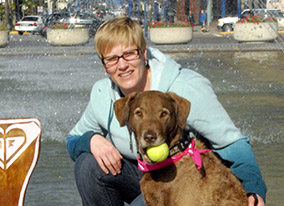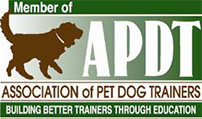Did you ever think of a limitation as a good thing? If you are a dog trainer, limiting your self is a great thing, especially when applied to your training sessions and how much you ask of your dog. By limiting yourself to a particular pre-set time, amount of reinforcement or repetitions, you can get better training done in a shorter time. I really embraced this after training with Bob Bailey and Parvene Farhoody in the chicken workshops. We always had timed training sessions and if we had a larger chunk of time to work with, say 10 to 20 minutes, we were encouraged to break that up into 2 to 4 min. training sessions, giving us time to see “if we were better off than when we started” as Bob would say.
Why would limiting yourself in a training session be a good thing? Well, for one, you limit your mistakes. Simply put if you train for a shorter period of times, you will make fewer errors. Also, you then have a break in training trials, and this allows you to decide if you are actually accomplishing what you want in a training session or if maybe you should sit down and think of a new training plan before bringing your dog back out. Instead of falling into the “just one more try” trap, and watching some of your nice behavior disintegrate before your very eyes (anyone shaped a retrieve and done that?), you can stop and correct your training error before it becomes a huge problem.
Here are some ways to set limits on your training sessions:
Time: Decide ahead of time how long this session will be and set a timer. I like this option best when I am working on fluency training or intervals. I find that 4 to 5 mins is usually a nice amount of time to get some good training done, and short enough that I won’t dig myself into a hole if I start to make errors. At the end of the time period I will put the dog up and decide on the next training session.
Number of training trials: I will use a number of training trials to measure my rate of success on a behavior or a chain. For example in signals I could decide to do 5 short signals exercises and see what number I have that were correct. This limits my training time as well as gives me excellent data on my success rate.
Number of reinforcements: I find one of the challenging times to limit myself in training is when I am shaping a behavior. I want to keep going! Since shaping is all about shifting criteria, it is easy to either make a huge leap that sends you off the rails or move so slowly with criteria shifts that you run into the problem of the animal getting stuck at a particular behavior. I count out the cookies before I train for those situations. I will put the 10 cookies in my bait bag or on the counter and train, when they are gone, we are done.
Being thoughtful in what training you are going to present to your dog and how long you are going to work will help you make best use of your training time and also limit the amount of errors that your train into your behaviors.
Timing my training sessions was a change that I made after the Chicken Workshops, but far from the only one. I learned a lot from my cueing workshops and I will be sharing that with you in my Cues You Can Use on line training class. Class registration is open and Class starts on July 1st. Check out the class here: https://www.onehappydog.com/shop/online-sports-classes/sports-training-intensives/cues-you-can-use/



No comments yet.